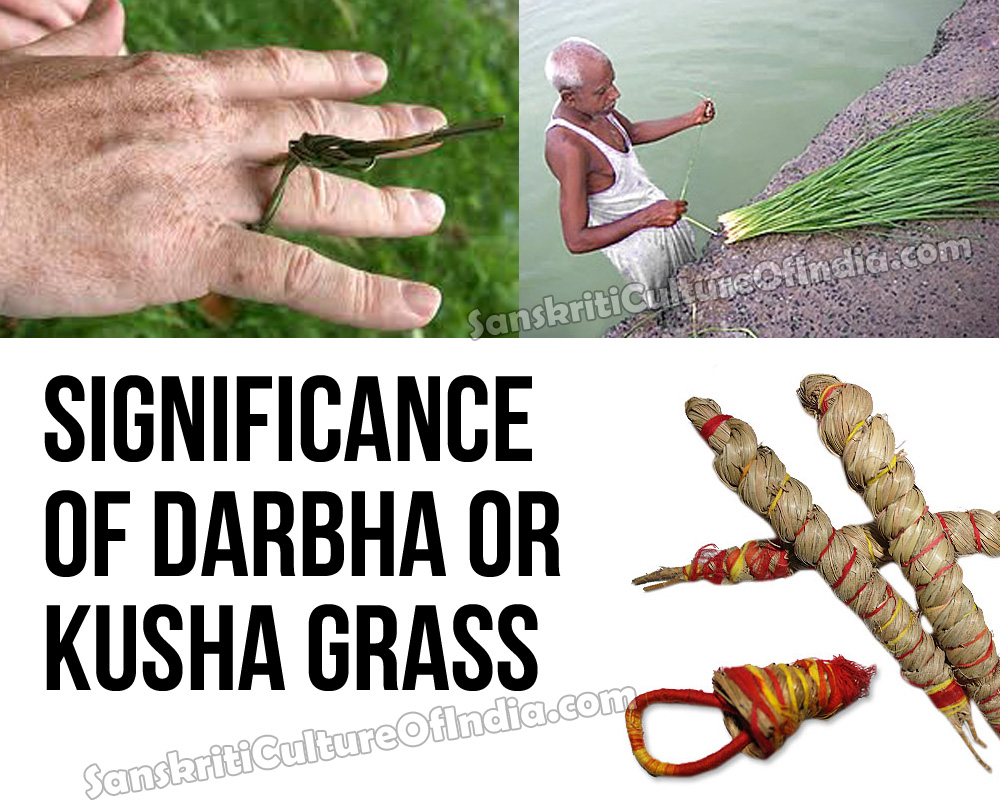Darbha Grass or Kusha Grass is scientifically known as Desmostachya bipinnata, commonly known in English by the names Halfa grass, Big cordgrass, and Salt reed-grass, is an Old World perennial grass, long known and used in human history.
In Ayurveda, Darbha grass is also used as a medicine to treat dysentery and menorrhagia, and as used as a diuretic (to promote free flow of urine).
Since Vedic age, Darbha grass is treated as sacred plant and according to early Buddhist accounts, it was the material used by Buddha for his meditation seat when he attained enlightenment under Bodhi tree.
This grass was mentioned in the Rig Veda for use in sacred ceremonies and also to prepare a seat for priests and the gods.
Darbha or Kusha grass is specifically recommended by Lord Krishna in the Bhagavad Gita as part of the ideal seat for meditation.
It is believed to block energy generated during meditation from being dischared through our body (mostly through legs and toes) into ground.
In recent medical research, Darbha or Kusha grass has been observed to block X-Ray radiation.
Darbha is used by Hindus as mat, ring on right hand ring finger while chanting vedic mantras, performing homam and all religious rituals.
For ceremonies related to death only Single leafed Darbha is used; for Auspicious and daily routine a ring made of two leaves is used; for inauspicious but not death related functions, (like Amavasya Tharpanam, Pithru Pooja etc) a three leaf Dharbham ring (Pavitram) is used and for the prayers in a temple, a Four-leaf Darbha ring is used.
Darbha has the highest value in conducting the phonetic vibrations through its tip.
Priests in India dip this tip in water and sprinkle all over the house or temple to purify the place.
During Fire-ritual (Homa), darbha is placed on all four sides of fire to help block all negative radiations.
During eclipses, darbha are placed on vessels containing water and food, so that negative effect of rays from eclipse does not spoil them.
Darbha is not cultivated everywhere but it grows naturally in selective places and is available in northeast and west tropical, and northern Africa (in Algeria, Chad, Egypt, Eritrea, Ethiopia, Libya, Mauritania, Somalia, Sudan, and Tunisia); and countries in the Middle East, and temperate and tropical Asia (in Afghanistan, China, India, Iran, Iraq, Israel, Myanmar, Nepal, Pakistan, Saudi Arabia, Thailand).
For religious purposes, it is not cut or plucked on every day, but only on Krishna Paksha Padyami (Next day after Full Moon day).










